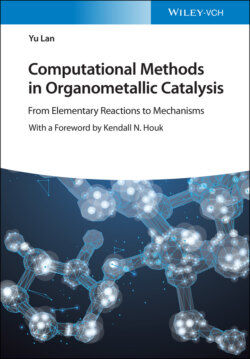Читать книгу Computational Methods in Organometallic Catalysis - Yu Lan - Страница 36
2.5 How to Choose a Method in Computational Organometallic Chemistry 2.5.1 Why DFT Method Is Chosen
ОглавлениеThe current computational studies of organic and organometallic systems are frequently subjected to a compromise of accuracy and time consumption: while it is always desired to reach the highest possible accuracy in the computational assessment, the necessity to complete the calculations within a reasonable time scale does not always allow for that.
The HF method ignores instantaneous electron correlation; therefore, it can be excluded firstly. Post‐HF methods attempt to treat electron correlation through several methods, which usually can provide a good accuracy in theoretical calculations. However, rather high scaling behaviors of those methods (Table 2.2) restrict the application in computational organometallic chemistry. In fact, some of the post‐HF methods are often used to calculate some small systems to obtain accurate results as a benchmark reference for other computational methods.
Table 2.2 Scaling behaviors of computational methods.
| Methods | Behaviors |
|---|---|
| HF | N 4 |
| MP2 | N 5 |
| MP3, CISD, CCSD | N 5 |
| MP4, CCSD(T) | N 7 |
| MP5, CISDT | N 8 |
| MP6 | N 9 |
| MP7 | N 10 |
| DFT | N3–N4 |
In DFT, electron density functional is used instead of wavefunction, which provides a better accuracy than HF method. In Kohn–Sham DFT framework, the most difficult multielectron interaction is simplified to a problem of the motion of electrons in an effective potential field without interaction, which includes the influence of external potential field and Coulomb interaction between electrons, such as exchange–correlation interaction. Therefore, DFT method provides an excellent computational efficiency.
In computational organometallic chemistry, the two results we are most concerned about are the activation energy for one pathway and the difference of activation energy between two pathways, which represent the reaction rate and selectivity, respectively. The precision orders required by those two results are 1 and 0.1 kcal/mol, respectively. Although the accuracy of DFT method seems to be insufficient to meet the requirements, the error cancelation makes the accuracy sufficient for the DFT calculations of reaction rate and selectivity.
